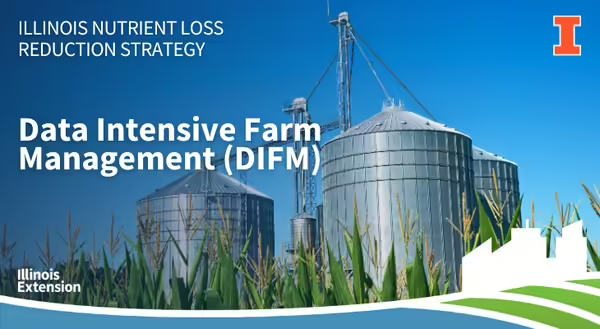
With thin profit margins and the high cost of inputs, there is a need to make farming more efficient and profitable. One way researchers and farmers are working together to do this is through data-intensive farm management (DIFM).
What is DIFM?
DIFM utilizes precision agriculture to conduct on-farm field trials that collect real-time data. With DIFM tools, a farmer will receive information on how crop yields respond to different application rates, field characteristics, or weather conditions. David Bullock, who leads the DIFM research team, says the program will “change the way agronomy is done” and help farmers make better decisions and, therefore, more money on their farms.
What equipment is needed?
To participate in DIFM, the producer needs to have farm equipment with a yield monitor. These tools allow shapefiles with trial designs to be uploaded and implemented on the field. Bullock says that DIFM can be used to collect any data the farmer may want as long as they have the equipment to monitor it. With all the information collected, farmers will receive site-specific advice like where the best return on nitrogen inputs will be within an operation or where they can apply more or less seed.
Who owns the data?
One point Bullock was sure to emphasize was data ownership and privacy. When a farmer chooses to participate in DIFM, all the data collected from their operation belongs to them. Some data may be used for academic research, but otherwise, the data may not be viewed by anybody without the owner’s permission. Most importantly for participants, all the data is used to help the farmer make the most informed decisions to improve the management of their farm.
How do you participate?
The DIFM research team is always working to expand its reach. For those interested in improving their farm management and incorporating conservation practices, a proposal has been submitted to subsidize farmers to do cover crop trials. For researchers, DIFM provides a system of thousands of trials with consistent protocols and clean data. Bullock hopes DIFM will be utilized by farmers and researchers across the world.
With side-dress applications around the corner, now is a good time to consider joining the DIFM program or keep it in mind for the next growing season. If you are interested in learning more, you can:
- contact David Bullock (dsbulloc@illinois.edu),
- check out the DIFM.farm website, and
- listen to Dr. Bullock’s interview on Episode 63 of the NLRS podcast
About the authors
Rachel Curry is an Agriculture and Agribusiness Educator focusing on agriculture and watershed education and is a part of the Illinois Extension's Nutrient Loss Reduction Strategy implementation team. Rachel earned a B.A. in Environmental Studies from Knox College and an M.S. in Environmental Science and Soil Science from Iowa State University with an emphasis on soil fertility. Her work focuses on education and outreach regarding the Illinois Nutrient Loss Reduction Strategy and agricultural conservation practices to reduce nutrient loss and improve water quality and soil health throughout Illinois.
Nicole Haverback is a Watershed Outreach Associate and is a part of the Illinois Extension's Nutrient Loss Reduction Strategy implementation team. Nicole earned a B.S. in Agriculture and Rural Policy Studies from Iowa State University. She coordinates watershed and planning activities to reduce nutrient losses from priority watersheds, provides expertise on best management practices for nutrient loss, and conducts outreach on agricultural conservation practices outlined in the Illinois Nutrient Loss Reduction Strategy.
Emma Eldridge is a Watershed Outreach Associate and part of the Illinois Extension Nutrient Loss Reduction Strategy implementation team, serving the Little Wabash and Embarras watersheds, designated as phosphorus-priority watersheds in the NLRS. Emma earned a B.A. in Environmental Studies from McKendree University and an M.S. in Forestry from Southern Illinois University Carbondale. She coordinates watershed and planning activities to reduce phosphorus losses from identified priority watersheds, provides expertise on best management practices, and conducts outreach on agricultural conservation practices outlined in the Illinois Nutrient Loss Reduction Strategy.
About the blog
At Illinois Extension, we’re working to improve water quality at home and downstream. Every month, our Watershed Outreach Associates will bring you stories highlighting agricultural conservation practices, current research projects and results, and from the field farmer interviews. The Nutrient Loss Reduction blog covers conservation practices recommended by the Illinois Nutrient Loss Reduction Strategy, timely updates, farm safety, and new decision tools to help farmers and producers reduce the nutrients leaving their field. Want to get notified when new blog posts are available? Subscribe at go.illinois.edu/SubscribeINLRS.